Choosing a unique material for a scarf complements your lifestyle. The scarf’s fabric determines its texture, appearance, and weather appropriateness, so you should select the scarf fabric wisely. However, the fabric suit’s characteristics, seasonality, price, and overall look are the key factors, so every customer must determine before investing the money.
Yet, the fabric characteristics, seasonality, price, and look are the key factors. So, every customer must determine before investing the money.
Let’s look at the scarf’s cloth description to determine the best type for you and your lifestyle.
What are the Pashmina, Cashmere, and Wool scarves fabrics?
When it talks to soft and luxurious stuff for scarves, pashmina, cashmere & wool are the best. These fibers are taken from animal wool. Pashmina and cashmere both come from goats. Luxury cashmere fiber may come extracted from the Cashmere goat. Whereas, pashminas refer to be made from the cashmere wool of pashmina goats.
Both cashmere and pashmina are soft and warm and best used for scarves. The wool for scarves comes from the fleece of sheep and many other animals. The wool for scarves is popular due to its pleasant & durable nature.
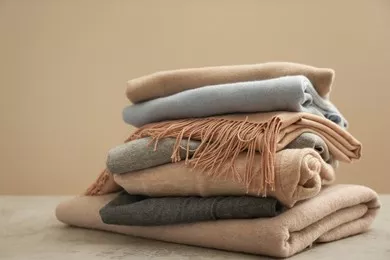

How to Distinguish three scarves fabric
Wool, Cashmere, and Pashmina have similar properties. This is the reason they are the more popular fabric of scarves. They also have some unique properties that make them different from each other.
Let’s go over the difference between pashmina, wool, and cashmere cloths for scarves.
Wool:
Wool is the classic go-to scarf material for its warmth and durability. It is obtained from sheep’s wool. It is breathable, meaning it is water-resistant and wicks away moisture.
Wool fabric for scarves is crucial if you live in a cold climate. Because it can hold 30% of its weight in wet without being damp.
Wool scarves are described as chunky. A chunky scarf is quite bulky or thick and typically wears best with casual style.
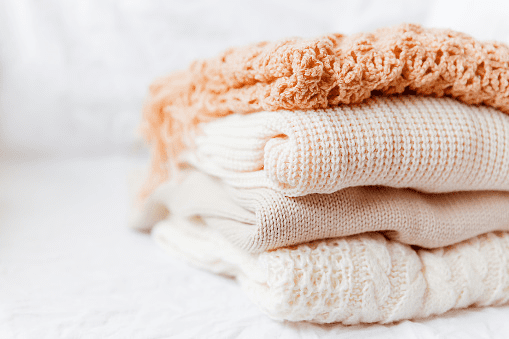

Why use wool fabric for a scarf?
Pure wool fabric is soft and gentle to the touch, and the textured face weave is clear and rich.
Wool is highly flame-resistant and doesn’t spread flame. It is highly prized for its unique attributes.
It retains the heat well, and thus, it is warm and windproof
It holds moisture even without feeling wet
It is a perfect thermal insulator and is best for wearing in winter
Wool fabric is warm, soft, durable, and versatile
Cons of wool fabrics
- It is low heat resistance
- It shows high elasticity of the fabric, particularly in wet form. Also, it stretches and de-shapes quickly.
- It takes much time to dry and even becomes heavier when wet
- Exposure to caustic alkali may destroy the wool fabric
- The sheep’s wool scarf loses the floating hair after the first cleaning
- Sometimes, it can be scratchy and uncomfortable to wear than other natural fabrics
- It can be prone to felting and even smells unpleasant when damp
How much does wool fabric cost?
The current Australian wool fabric cost is $19.60 per kilogram. It is significantly more expensive than other synthetic materials. The reason is its unique properties.
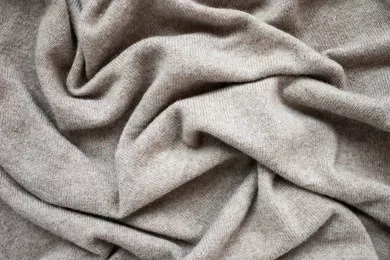

Is there a real difference exist between cashmere and pashmina?
Pashmina and cashmere are natural fibers that come from goat fur, which is why most of the time used synonymous, but pashmina fabric comes from a specific goat while cashmere comes from a variety of goats, and this is what makes a difference between these two fabrics. Pashmina is 100% pashmina wool, while cashmere is a blended form.
Cashmere
Cashmere fabric is also known as cashmere wool, but a good point to understand is that all cashmere is wool, but all wool fabric does not mean it would be cashmere. Cashmere is made up of the hairs of goats, and when these goats shed their soft undercoat in the spring, the wool is harvested. Finally, their hairs/fur are separated, cleaned, combed, and spun for final use as a soft and luxurious fiber. Exclusively comes from cashmere goats and is whirled by a machine for use.
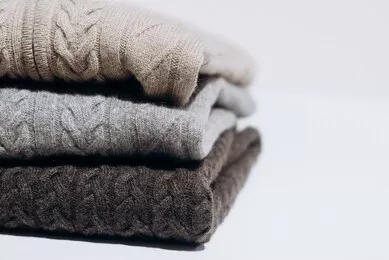

Why choose cashmere fabric for the scarf
- It is softer than many other materials but less than pashmina
- It is delicate and durable, and less expensive than pashmina
- Require washing with hands only
- It is soft, lightweight, and offers three times more insulating properties than wool
- Cashmere is prized for its softness, and fluffy hand, and is a good choice for warm weather
- Its fibers are slightly larger and range between 16-19 microns
- It is a little thicker, warmer, and readily available than pashmina
- Easy spinning.
Cons:
- It is more expensive than other fabrics, like wool
- It is more delicate, and special care is required
How much does it cost?
Cashmere comes from goat fur. Therefore, expensive than many other natural fabrics but less expensive than pashmina. The price depends on the fabric, like blended costs less than pure cashmere wool.
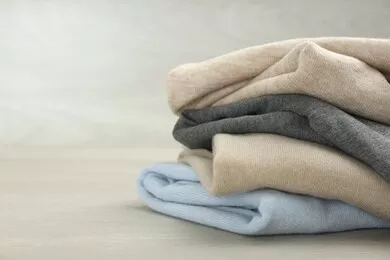

Pashmina Scarf
Pashmina is a type of cashmere that only comes from a specific goat and is more expensive, softer, and warmer than cashmere. It is extracted from the Changthangi goat (one type of goat), that’s why it is more expensive than wool and cashmere.
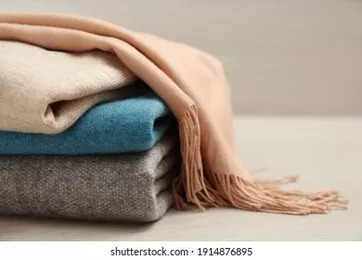

Why wear a pashmina fabric scarf
- It is warmer than cashmere due to its thicker fiber.
- It is delicate, softer, and more pleasant than other fabrics and is hand-wash only.
- Pashmina fibers are too small and generally range from 10-to 16 microns
- It is the softest and warmest. It is considered to be luxurious and best for winter. Also, it offers the best natural qualities.
Cons:
- It is more expensive and less available than other natural fibers
- It is a delicate fabric, which means less durable and requires more care
- Its spinning is difficult because it is thin
How much does it cost?
Pashmina comes from only specific goats, and fur is harvested once a year. Thus, its rare availability makes it a bit more expensive than other natural fibers. A 100% pure Pashmina scarf can be worth US$120 – 300.
What Scarf Material Is Better: Cashmere, Pashmina, or Wool?
It is hard to choose the best one among these three materials. However, you can notice the pros and cons of each and select which costs you less.
And also, depends on which suits you more. For scarves, these three materials are the best. The fabric, size, price, and some characteristics matter, like durability and warmth.
So, consider these things before purchasing. Also, be assured that all three are natural materials give worth your money.


